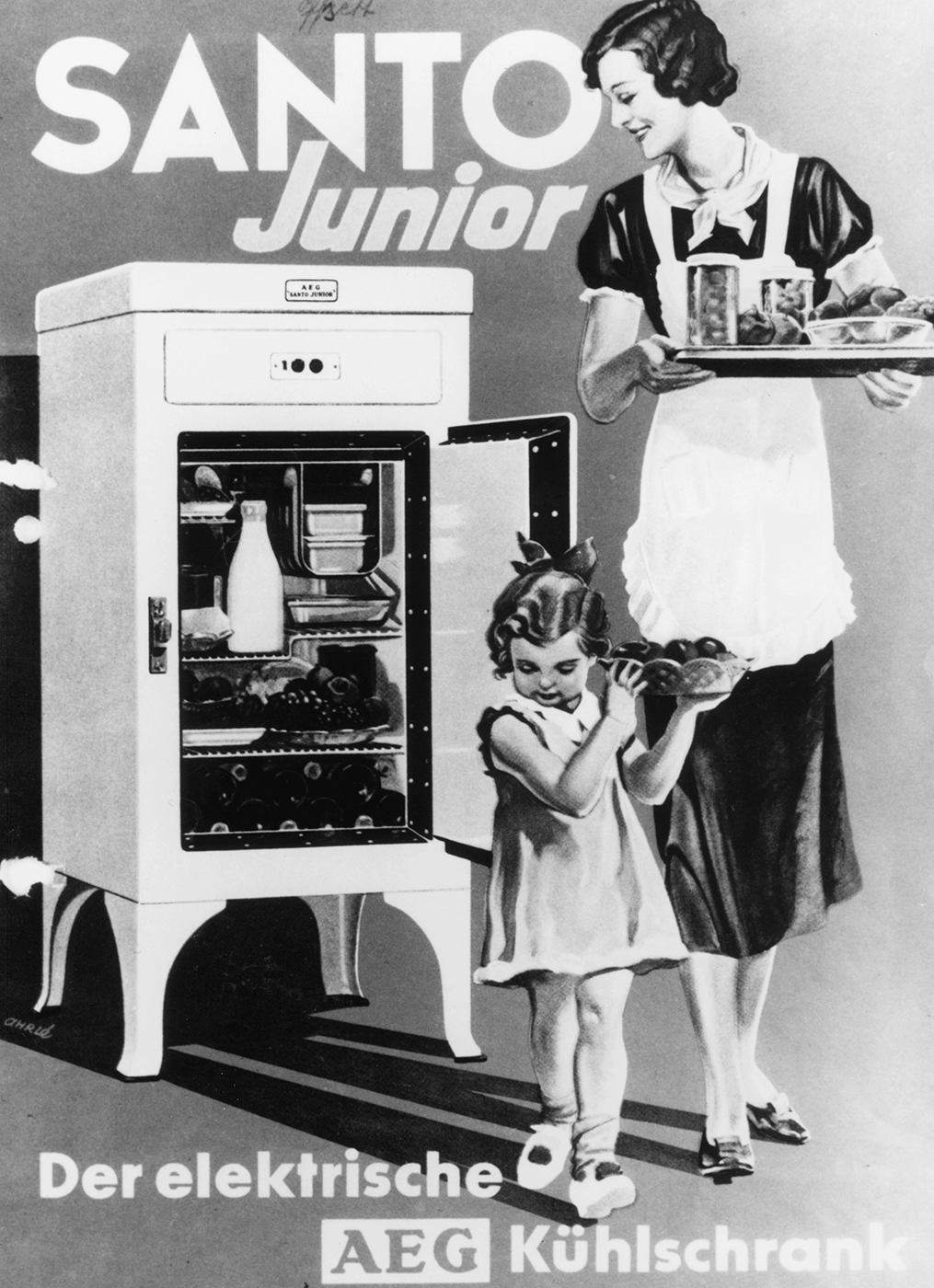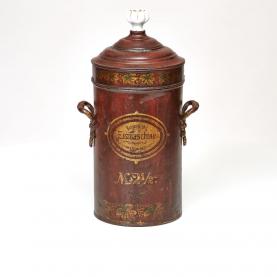Refrigeration
Refrigeration and freezing are techniques used for preserving food in low temperatures. These procedures slow down or stop most bacteria from dividing and thereby multiplying, but do not kill them. The history of using cold temperatures for preserving food goes as far back as Palaeolithic times, when caves were used as places for storing food. Using a cold environment as a means of preserving food on a large scale dates back to the 19th century, with the invention of mechanical refrigeration.
Use of natural cold temperatures and production of an artificial cold environment
Humans have always known that cold temperatures are a natural method for preserving food. In Palaeolithic times, the depths of caves made a clever hiding place as well as an excellent place for cold storage. It is said that the Chinese invented the use of natural ice. However, they mainly used it to enjoy the pleasure of a cold drink. Ice only started to play a major role as a method for preserving food from the 19th century onwards. It was mainly used in the transportation and storage of fresh produce. At the time, Europe and especially Great Britain, needed to bring meat over from Argentina, Australia and New Zealand to feed its ever-growing population. The requirements of industry and the transportation companies could no longer be met by natural ice production. This stimulated scientific research, and new knowledge about the relationship between gas volume and temperature variation was a consequence of this supply problem. The first refrigerator to make use of air compression and expansion was patented in the United States in 1851. The turning point came twenty years later, when the engineer Charles Tellier successfully installed these refrigerators on a cargo ship called Le Frigorifique. In 1886, it took this ship one hundred and five days to transport meat from Buenos Aires to France.
Artificial cold, from -150°C to 5°C
In the past, butter and milk were stored in the cellar, the coldest place in the house. They were covered with a dome made of terracotta soaked with water and, thanks to the evaporation of this water, the food was kept at a low temperature. This technique dates back to Antiquity. Nowadays, domestic refrigerators can maintain a temperature of 5°C, although they only became widely used from the second half of the 20th century. Food can be stored in a refrigerator for days whereas extreme cold, freezing at -18°C and deep freezing at -40°C, allows food to be stored for several months. In the early 1960s, frozen food manufacturers developed a new cold preserving technique, that of air blast freezing. This method enables very even freezing and helps to stop food from clumping, for example when freezing peas. Cryogenic freezing is another technique for achieving extremely low temperatures, below – 150°C. To do this, nitrogen is useful as a refrigerant, as it has a boiling point of -196°C and a slightly lower freezing point of -210°C. Between these two temperatures, nitrogen appears as a transparent, fluid, inert liquid. In these applications, liquid nitrogen works like magic. Modernist or molecular cuisine chefs have learned how to use it to create unexpected food textures, like ice creams with extra-fine textures, and to invent new foodstuffs like frozen olive oil, which can be cryo-fragmented to create beautiful, glass-like shards.
Ice cream without a freezer
In the 17th and 18th centuries, many scientists carried out laboratory experiments with refrigerant blends. They thus observed that, by mixing ice cream with sodium chloride, the mixture became even colder and could reach temperatures as low as 0°C to –20°C. In the 18th century, this blend was used to chill various ingredients and produce ice creams and sorbets long before freezers were invented.








